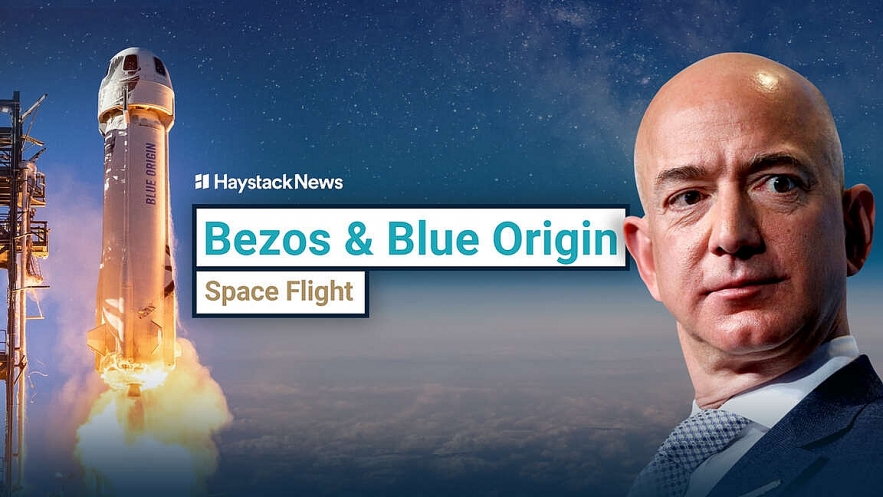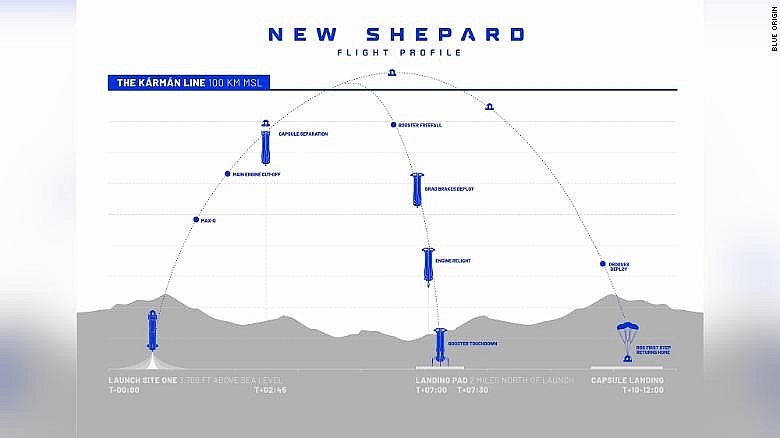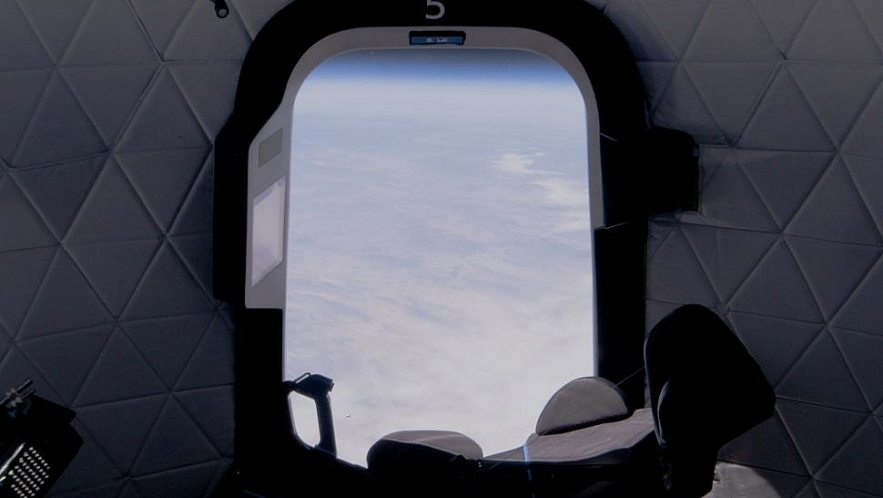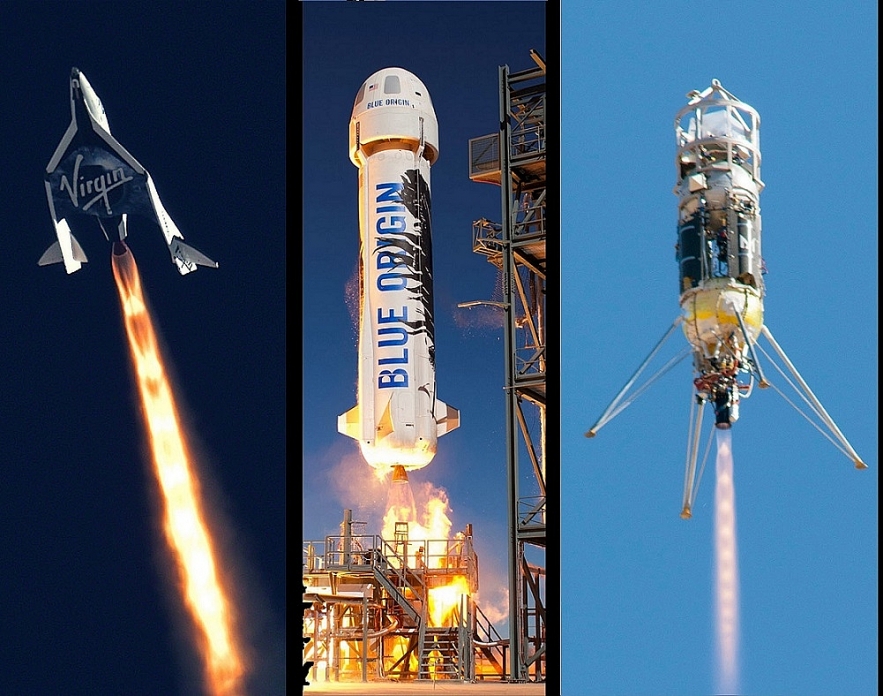Less or High Risk for Jeff Bezos's Blue Origin Space Flight?
 |
| Blue Origin's first human launch with Jeff Bezos |
Less or High Risk for The Blue Origin on Space Flight?
Here's what Bezos' flight will look like and the extent to which people are taking their lives in their hands when they go to outer space these days.
Less Risk for Blue Origin Space Flight?
The Blue Origin launch system has flown successfully 15 times, but never with people on board. This would be its first passenger flight. And the nature of Bezos' flight means it comes with some inherently lower risks than more ambitious space travel attempts.
Suborbital flights don't require as much speed or the intense process of trying to re-enter the Earth's atmosphere at incredible speeds, they're considered much less risky than orbital flights.
There's also back-up safety features to help the capsule land gently even if a couple of its parachutes fail to deploy.
High Risk for Blue Origin Space Flight?
But that doesn't mean the risk is zero, either.
There is no way to absolutely guarantee safety should New Shepard malfunction.
Even though suborbital flights are less risky than orbital missions, they can still be deadly.
One of Virgin Galactic's suborbital space planes, for example, broke apart in 2014 when one of the vehicle's copilots prematurely deployed the feathering system designed to keep the craft stable as it made its descent. The added drag on the plane ripped it to pieces, killing one of the pilots.
Blue Origin has not encountered similar tragic accidents during its testing phase, though — as an old industry adage goes — space is hard.
But, Bezos has indicated, the risk is worth it.
High speeds and high altitudes come with inherent risks, and even small errors can have big consequences.
As with all spaceflights, the New Shepard crew will be subject to high risk. Their 11-minute spaceflight will subject them to multiple forces of gravity, or G-loads, especially during launch and landing. They will also sustain a few minutes of microgravity or "weightlessness" at the top of their parabolic flight.
Some other hints of the spaceflight experience come from a terms and conditions document associated with the Blue Origin seat auction earlier this year. Among requirements, crew members had to be able to "dress themselves in a one-piece, zip-up flight suit" and climb the launch tower — about seven flights of stairs — in less than 90 seconds, the document states.
The crew will be climbing in the spacecraft atop a launch tower (requiring no fear of heights), then sitting in a reclined seat for between 40 and 90 minutes before launch time. In case of emergency, they'll need to unstrap themselves in less than 15 seconds.
 |
| A graphic that shows the flight profile of Blue Origin's New Shepard. |
Facts About The Blue Origin on Space Flight
*Tourists can look: Blue Origin has also boasted about its big windows that tourists can look through during their precious few moments in space. "These windows make up a third of the capsule, immersing you in the vastness of space and life-changing views of our blue planet," the company said in 2018.
 |
| The view from a seat on Blue Origin's New Shepard Spacecraft First Step during a suborbital test flight on April 14, 2021. (Image credit: Blue Origin) |
*The New Shepard system is named after Mercury astronaut Alan Shepard, who was the first American to go to space in 1962.
*The rocket has performed 15 uncrewed tests before the July 20 flight, most recently on April 14 when it launched on an astronaut rehearsal flight. It is about 60 feet (18 meters) tall and is designed to shoot passengers into suborbital space for a "weightless" phase of about three minutes.
*3 minutes: If all goes according to plan, the New Shepard rocket will fire its engines to heave itself off the launchpad. As Bezos and his guests scream through the atmosphere, the force of the climb and the pull of Earth's gravity — which should feel three times stronger than normal — are expected to pin them to their seats.
After three minutes, the rocket booster should fall away from the capsule that holds the passengers. That capsule should continue arcing above the Earth, and Bezos and his companions should feel weightless.
They're expected to have three minutes to unbuckle, float around the cabin, and savor the views of the planet curving below. Then gravity should pull the spaceship into a high-speed plunge back to Earth. Three parachutes should balloon into the air to break the spaceship's fall, carrying the capsule to a gentle landing in the Texas desert. A recovery crew should be waiting.
*11 minutes: The entire flight is typically 11 minutes long, with the rocket returning autonomously to the launch pad using a ring and wedge fins for aerodynamic stabilization. The crew members return to Earth underneath a parachute, within their crew capsule.
*New Shepard's capsule has a maximum capacity of six people and includes large windows for astronauts to take in views of Earth. Alternatively, flights can include a combination of astronauts and experiments, as Blue Origin hopes to eventually have paying companies use microgravity for a few minutes to test out advances in manufacturing, physics or biology, among other ideas.
Blue Origin space flight: When and Where to Launch - Time & Date
On July 20, Blue Origin will launch its first crewed spaceflight with its New Shepard rocket and capsule, and the flight will carry its billionaire founder: Jeff Bezos.
The mission, which Blue Origin has dubbed the First Human Flight, will be the 16th flight of New Shepard, but the first with astronauts aboard. Bezos and three other civilians will launch from the company's Launch Site One near Van Horn, Texas at 9 a.m. EDT (1300 GMT), in a milestone mission for the space tourism company.
The launch of New Shepard's first crewed flight will be broadcast Tuesday (July 20) beginning at 7:30 a.m. EDT (1130 GMT) at BlueOrigin.com. Liftoff is expected at 9 a.m. EDT (1300 GMT), but could change depending on weather or technical matters.
Blue Origin will hold a prelaunch press conference on Sunday, July 18, at 12 p.m. EDT (1600 GMT), which will be livestreamed on BlueOrigin.com.
How to Watch Blue Origin Lauch - Live Stream, Online
Blue Origin said there won't be any "public viewing areas" in the vicinity of the launch site, but the company plans to stream the spaceflight live on its website.
The launch of Blue Origin Space Flight will be livestream on BlueOrigin.com. The broadcast is set to start at 6:30 a.m. CT (7:30 a.m. ET), about 90 minutes before liftoff.
Jeff Bezos, and Blue Origin is preparing to ride a New Shepard rocket up to the Kármán line — an imaginary boundary 62 miles (100 kilometers) above sea level, where many experts say space begins. There, he's expected to experience weightlessness and stunning views of Earth for about three minutes.
 |
| NASA picks 25 space technologies for testing by Blue Origin |
Who is accompanying Jeff Bezos on Blue Origin's first crew members?
New Shepard's first crewed flight will carry four passengers, but no pilot as the space capsule is an automated system.
Blue Origin's maiden crewed flight on Tuesday involves four people who will cross the Karman line, which separates Earth's atmosphere from space, for the very first time. The crew will include:
Jeff Bezos
Jeff Bezos, 57, will leave behind the planet where he made his vast fortune for a few minutes on a spaceship built by the company he founded in 2000, when he was still merely a single-digit billionaire.
Six years before that, he started a small online bookstore called Amazon.com out of his garage. Bezos' net worth is today estimated at more than $200 billion.
The brother, Mark Bezos
Jeff Bezos has invited along his brother Mark, a financier who directs the Bezos Family Foundation and works as a volunteer firefighter.
The pair are best friends, and Jeff shared the moment he surprised his sibling, six years his junior, by asking him to join the mission in a video that went viral on Instagram last month.
 Who Is Mark Bezos: Biography, Personal Life, Career and Net Worth of the Brother of the Richest Man Who Is Mark Bezos: Biography, Personal Life, Career and Net Worth of the Brother of the Richest Man |
Trailblazer Wally Funk
At 82, barrier-breaking woman aviator Wally Funk is about to become the oldest ever astronaut, fulfilling a lifelong dream that was thwarted by the sexism of the early space era.
Funk, who took her first flying lesson aged nine, excelled in the Mercury 13 project which was intended to train women for space using the same standards as male astronauts, but the program was eventually nixed.
She nevertheless had an accomplished career in aviation, becoming the first female air safety investigator for the National Transportation Safety Board, and serving as chief pilot in several flight schools.
Dutch teen Oliver Daemen
Oliver Daemen, 18, is set to become the youngest astronaut. He holds a private pilot's license and is a space enthusiast who will study physics in university this fall.
The Dutch teen is flying in place of the still anonymous winner of a $28 million public auction, who asked to pass this time because of "scheduling conflicts," and will go on a later trip.
Daemen's ticket was paid for by his father, the CEO of a private equity firm.


























